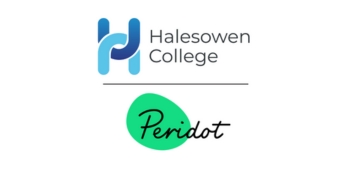A growing number of children and young people are experiencing significant mental health and anxiety issues as a result of the pandemic. Coupled with a lack of external support, this has impacted on some students’ ability to attend school full time. But what to do about it?
A recent report found that the proportion of children in the UK classed as “severely absent” at school rose to 2.1 per cent earlier this year, which is not only well above the pre-pandemic rate, but the opposite of the trend the education system has been working to reverse..
In one of our secondary schools, 82 per cent of Year 11 students who had a regular attendance rate achieved five GCSEs at grades 5 – 9. Sadly, less than half of those who recorded particularly low attendance achieved those five GCSEs.
It isn’t always possible to get these young people back into school quickly, so our onus should be on closing this gap.
To that end, the very systems and processes the pandemic encouraged us to develop are now allowing us to keep track of vulnerable students, tackle growing absenteeism and provide continuity of education.
Attendance
Know your cohort
By now, we all know which of our students to class as vulnerable, the different categories of vulnerability, and how to support them. The key to doing the latter effectively is to assess where the gaps are in each child’s attendance and performance in order to identify and target their individual needs.
Regular communication
Central to that, and more than ever before, is the need to engage (or re-engage) families whose children’s attendance is sporadic or poor. We do this through regular contact, and invest doubly in relationships around younger children.
Depending on school capacity and the student in question, family liaison can be carried out by attendance officers, SENCOs or pastoral staff. Appointing a staff member who is well known and trusted by the family is the surest way to ensure progress.
As a trust, we have also appointed a trust-wide Attendance Intervention Officer who works with families across our secondary schools to address situations where a child’s attendance is particularly low.
Start small
Getting pupils back into school wherever possible, even if for shorter periods of time, is an important first step. Reduced timetables can be useful for this, if handled well.
In addition, we ensure that there are always designated spaces in all our secondary schools where students can come in and work in what they may perceive to be a less pressured environment.
Attainment
Speech and language skills
Addressing attendance is the first step to mitigating Covid’s impact on academic progress and attainment. However, many of the young children now arriving at primary school have missed out on essential early socialisation and communication opportunities.
As a result, they require additional support to truly engage with their learning. We’ve done this by renewing our focus on speech and language skill development to help all children thrive at school.
Regular check-ins with staff
Checking in with staff to assess and monitor students’ progress is something that all schools do on a regular basis, but has become even more important since the pandemic.
Schools should make sure that all teachers have the resources they need to provide individualised support. And if they need help, put this in place for them.
Leveraging technology
Schools should harness the digital skills students developed over the pandemic to support their academic progress, but never assume resilience. Still today, not all children have access to the internet or a device that allows them to participate in lessons or study at home.
Loaning out school devices to pupils who need access on a short-term basis is one way to support continuity. Equally, it’s important to ensure they know how to access, use and interact with these technologies.
Essentially, life can’t go on as if the pandemic is over. We are still working through it, and the tools and techniques we developed at the start are still our best bet to support our pupils.
We just need to keep honing them as we go.











Your thoughts